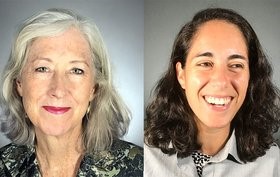January 30, 2020 Modern Healthcare
Fragmented health system contributes to medication overload for seniors
Shannon Brownlee and Judith Garber

It’s every parent’s nightmare to imagine their toddler getting into the medicine cabinet and suffering serious harm from ingesting a drug. A medication that’s helpful for adults can act like poison in children, who are far more vulnerable to side effects. Their bodies are smaller, and they don’t process drugs in the same way.
Yet we don’t think twice about older adults taking multiple medications, even though they’re also vulnerable and highly susceptible to drug side effects and adverse interactions.
Aging brings ailments and chronic illnesses, and more illnesses generally lead to more prescriptions. Often those drugs relieve symptoms and successfully treat illness, but every additional medication taken by an older person increases the risk of a serious adverse effect. As medication use has dramatically increased, too many older adults are simply overloaded with medications that are more likely to harm than help them.
Today, over 40% of adults age 65 and older take five or more prescription medications regularly, triple the rate of two decades ago. As many as 9 million older people are on 10 or more meds, and it’s not unusual for patients to take as many as 20 to 25 different medications daily.
The result: increased rates of hospitalization for adverse drug events. These events run the gamut from dizziness and falls to delirium, heart attack, stroke and even death. In 2018, more than 280,000 people over age 65 were hospitalized for an adverse drug event, and another 5 million sought care at a doctor’s office or emergency department.
Part of the problem is our fragmented healthcare system. As healthcare delivery for older Americans has become increasingly specialized, primary-care clinicians struggle to serve as the single provider caring for the whole patient. Rather, each specialist treats each condition separately, often without knowing or considering what other conditions the patient has or what medications they are already taking. Transitions in and out of the hospital often make things worse. Patients are usually assigned a new care team while in the hospital, leaving their regular primary-care doctor and other specialists out of the loop.
It’s not uncommon for new medications prescribed to treat short-term health problems to be continued indefinitely even after the patient is discharged.
Electronic health records have not fulfilled the promise of better care coordination and have even contributed to the fragmentation of care. Despite significant efforts from the federal government to encourage interoperability, most EHRs cannot transmit information across different platforms. This leads to clinicians not knowing what drugs their patients are taking, drugs being duplicated, and clinicians restarting drugs that were previously discontinued.
Medication overload has also been driven by pharmaceutical marketing, which has transformed our view of the effects of aging into a collection of diseases whose remedy is invariably a prescription.
Too many physician visits go like this: The patient complains of trouble sleeping. Rather than recommending effective non-drug therapies, like relaxation and good sleep habits, the doctor diagnoses insomnia and prescribes Xanax or Ambien. These drugs improve sleep by just 14 minutes on average compared to a placebo, and can have serious side effects for older adults, including confusion and falls.
To address the growing epidemic from medication overload, the Lown Institute convened a working group of experts to create a national action plan. The working group concluded that much better coordination between sites of care is needed, as well as improvements in EHRs. Changes are also needed in training and continuing education to emphasize the changing needs of frail elders.
We also need a cultural shift in how we view drugs and aging. Even when clinicians become more aware of medication harms, the power of pharmaceutical marketing will continue to reinforce the culture of prescribing. Better regulatory policy is needed to curtail office detailing and direct-to-consumer drug advertising.
Finally, there’s a need for much wider awareness of the harms of medication overload. Just as public health organizations have launched campaigns around prescription opioid risks, we need a national campaign to tell patients and caregivers how to protect themselves from harm from too many medications. Before adding a new prescription, patients should be empowered to ask a few simple questions like, “Do I really need this medication?” “When should I stop taking it?” and “Can I start on a lower dose?” And caregivers need to encourage such conversations and listen.
For too long, older Americans have been encouraged to “ask their doctor” about getting a prescription. Now we need to help patients ask their doctor if their medications may be wrong for them.
